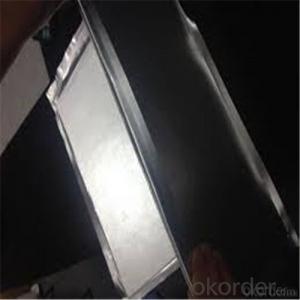Expanded Polystyrene (EPS) is a versatile material that has found its way into various applications due to its unique properties. One of its most notable uses is in sandwich panels, which are a combination of two outer layers and a lightweight core, providing excellent insulation. EPS sandwich panels are not just a construction material; they are a solution that addresses various challenges faced in the building industry.
The Science Behind EPS Sandwich Panels
EPS is a closed-cell foam made from polystyrene beads that are expanded with steam. This process creates a rigid, lightweight material with a low thermal conductivity, making it an excellent insulator. The low density of EPS contributes to its high insulation value, as air is a poor conductor of heat. EPS sandwich panels consist of two rigid facings bonded to a core of EPS foam, which provides structural support while maintaining the insulating properties of the EPS.
Versatility in Design
EPS sandwich panels are not just limited to their insulating capabilities. They offer a wide range of design possibilities. Architects and builders can use these panels to create unique and visually appealing structures. The panels can be cut to size, shaped, and customized to fit the specific needs of a project. Whether it’s a modern, sleek design or a more traditional look, EPS sandwich panels can be tailored to meet the aesthetic requirements of any building.
Sustainability and Energy Efficiency
One of the key benefits of using EPS sandwich panels is their contribution to sustainability and energy efficiency. EPS has an outstanding insulation value, which means buildings using these panels require less energy for heating and cooling. This not only reduces energy consumption but also lowers greenhouse gas emissions, contributing to a smaller carbon footprint. The long lifespan of EPS materials ensures that these panels can provide energy savings for many years to come.
Easy Installation and Cost-Effectiveness
Installing EPS sandwich panels is a straightforward process. They are lightweight, making them easy to handle and install. This reduces labor costs and speeds up construction time. Additionally, the cost of EPS materials is relatively low compared to other insulation materials, making them an affordable option for projects with a tight budget. The combination of low material cost and easy installation contributes to the overall cost-effectiveness of using EPS sandwich panels.
Applications Beyond Construction
While EPS sandwich panels are widely used in construction, their applications extend beyond that. They are used in cold storage facilities, where their insulating properties help maintain low temperatures. In the transportation industry, EPS panels are used to protect sensitive cargo during transit. They are also used in the aerospace industry for their lightweight and insulating properties.
The Future of EPS Sandwich Panels
As the world moves towards more sustainable and energy-efficient solutions, the demand for EPS sandwich panels is expected to grow. With advancements in technology and materials, we can expect to see even more innovative uses for EPS in the future. The potential for customization and the inherent properties of EPS make it a material to watch in the coming years.
Conclusion
EPS sandwich panels are more than just an insulating material; they are a multifaceted solution that addresses various needs in different industries. Their versatility in design, sustainability, ease of installation, and cost-effectiveness make them an attractive option for a wide range of applications. As we look to the future, the potential for EPS sandwich panels to contribute to a greener and more energy-efficient world is immense.

